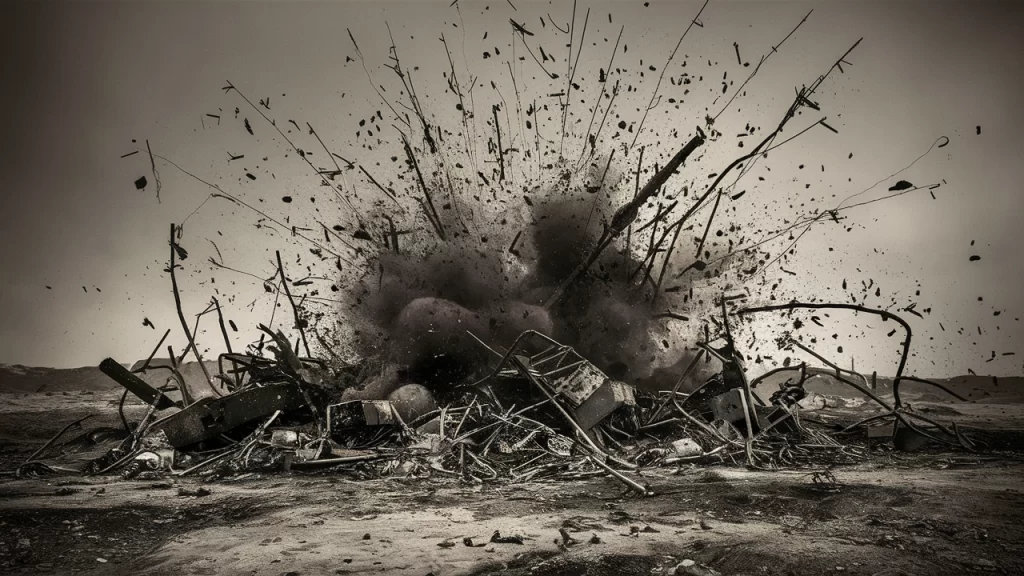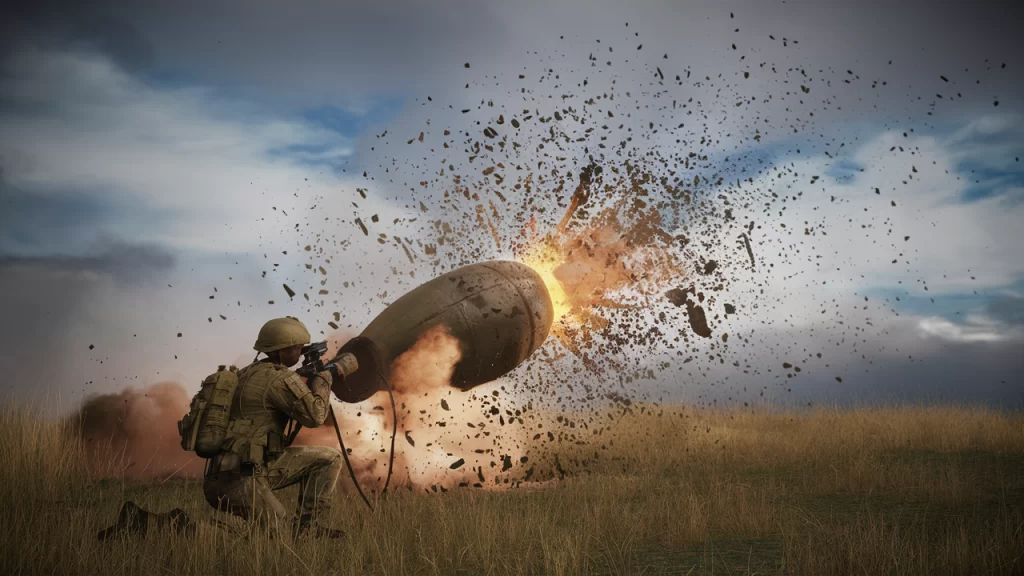In discussions about explosions and warfare, shrapnel is a term that frequently comes up. But how far does shrapnel travel, and why is it so dangerous? Understanding the distance shrapnel can travel is crucial, not only for military personnel but also for civilians who may be at risk during conflicts or accidents involving explosives. In this article, we will explore the factors that determine how far shrapnel can travel, the potential dangers it poses, and some surprising facts you may not know. Let’s dive into the startling truth behind the reach of shrapnel.
What is Shrapnel?

The Basics of Shrapnel
Shrapnel refers to fragments of a bomb, shell, or other explosive device that are propelled outward during an explosion. These fragments can be made of metal, glass, or other materials, and they travel at high speeds, posing significant risks to anyone in their path.
Origin of the Term
The term “shrapnel” originates from Major General Henry Shrapnel, a British Army officer who invented an artillery shell filled with metal balls designed to scatter upon explosion. Over time, the term has come to describe any fragment ejected during an explosion.
The Purpose of Shrapnel
Shrapnel is designed to maximize the damage caused by an explosive device. When an explosion occurs, the energy released propels the fragments outward at high speeds, creating a wide radius of destruction. This makes shrapnel particularly dangerous in both military and civilian contexts.
Factors Affecting How Far Shrapnel Travels
The Explosive Force
One of the primary factors determining how far shrapnel can travel is the force of the explosion.
High-Explosive Devices
In high-explosive devices, the energy released is so powerful that it can propel shrapnel over long distances. The greater the explosive force, the farther the shrapnel can travel. In some cases, shrapnel can reach distances of several hundred meters.
Size and Weight of Shrapnel
The size and weight of the shrapnel fragments also significantly affect their ability to travel far.
Heavier Fragments
Heavier fragments tend to travel shorter distances because they are more affected by gravity. However, due to their mass and momentum, they can cause more severe damage.
Lighter Fragments
Lighter fragments can be carried farther by the force of the explosion, but they may lose speed more quickly due to air resistance. Despite this, even small fragments can be deadly if they hit a vulnerable area.
Angle of Explosion
The angle at which the explosive device is detonated can influence the trajectory of the shrapnel.
Direct Explosions
If an explosion occurs at ground level, the shrapnel tends to spread out horizontally, covering a wide area but with limited vertical reach.
Elevated Explosions
In contrast, an explosion that occurs at an elevated position, such as in the air or on a raised platform, can send shrapnel flying in all directions, increasing its potential distance.
Real-Life Examples of Shrapnel Travel Distances

Military Incidents
Military conflicts often provide real-world examples of how far shrapnel can travel.
Artillery Shells
Artillery shells, designed to create maximum damage, can send shrapnel flying over large areas. In some cases, shrapnel from artillery shells has been recorded traveling over 300 meters from the point of explosion.
Grenades and Landmines
Grenades and landmines, while smaller in scale, can still propel shrapnel significant distances. Shrapnel from these devices can travel up to 100 meters, depending on the type and explosive force.
Civilian Accidents
Explosions in civilian areas, whether due to accidents or terrorist attacks, also demonstrate the dangers of shrapnel.
Industrial Explosions
In industrial settings, explosions can occur due to chemical reactions, equipment failure, or other accidents. Shrapnel from such explosions can travel hundreds of meters, posing a risk to anyone in the vicinity.
Terrorist Attacks
In terrorist attacks, devices are often designed to maximize shrapnel spread to cause as much harm as possible. The distance shrapnel can travel in these scenarios is highly variable but can be extensive, depending on the size and design of the explosive.
The Dangers of Shrapnel
Physical Injuries
The primary danger of shrapnel is the physical injuries it can cause.
Penetrating Wounds
Shrapnel often causes penetrating wounds, where fragments enter the body, damaging tissues, organs, and bones. These injuries can be life-threatening, especially if vital organs are affected.
Secondary Injuries
Even if shrapnel doesn’t directly hit a person, the force of the explosion can cause secondary injuries. For example, shrapnel can cause debris to fly, which can lead to further injuries.
Psychological Impact
Beyond physical injuries, the threat of shrapnel can have a significant psychological impact.
Fear and Anxiety
Living in an area where explosions are a risk can lead to constant fear and anxiety. The unpredictable nature of shrapnel adds to this stress, as there is no way to know exactly where it will land.
Long-Term Consequences
Survivors of shrapnel injuries often face long-term consequences, including chronic pain, disability, and psychological trauma. The recovery process can be lengthy and challenging, highlighting the severe impact of shrapnel.
Also Read: Golden Technology: Unlocking Extraordinary Innovation and Success
How to Protect Against Shrapnel
Safety Measures
Taking safety measures can help protect against the dangers of shrapnel.
Protective Barriers
In military and industrial settings, protective barriers can be installed to absorb the impact of shrapnel and reduce the risk of injury.
Personal Protective Equipment (PPE)
Wearing personal protective equipment, such as helmets and body armor, can provide a layer of protection against shrapnel. While not foolproof, PPE can significantly reduce the severity of injuries.
Awareness and Preparedness
Being aware of the risks and knowing how to respond in an emergency can also save lives.
Evacuation Plans
Having an evacuation plan in place is crucial in areas at risk of explosions. Knowing where to go and how to respond quickly can minimize the risk of injury.
Emergency Training
Training individuals in first aid and emergency response can help manage the aftermath of an explosion, providing immediate care to those injured by shrapnel.
Shrapnel is a deadly threat that can travel surprising distances, posing a significant risk to anyone in its path. By understanding the factors that influence how far shrapnel travels, we can better appreciate the dangers it presents and take steps to protect ourselves and others.
Whether you’re in a high-risk area or simply curious about the effects of shrapnel, staying informed and prepared is key to staying safe. By following the safety measures and understanding the risks, you can help protect yourself and those around you from the dangers of shrapnel.

